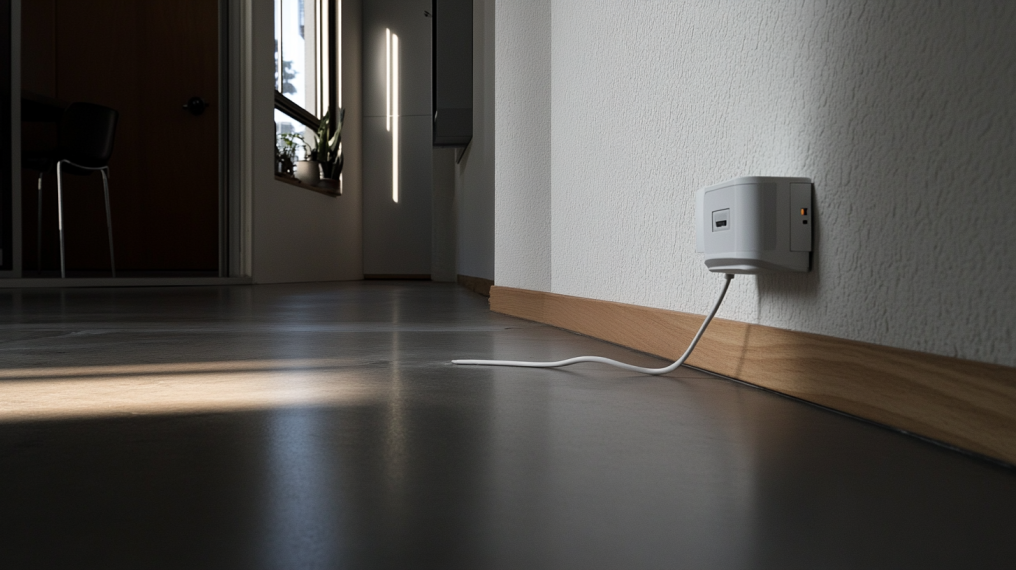NEWS TAG
brand
How To Ethernet Cable Between Floors Through House Without Drilling?
When it comes to setting up a reliable and fast home network, nothing beats a wired Ethernet connection. However, not everyone is comfortable with or allowed to drill holes in their walls, especially renters or those living in historically significant properties. Here's how you can install Ethernet cables in your home without drilling, ensuring you keep your walls intact and your landlord happy.

Why Avoid Drilling When Running Ethernet Cable Through Your House?
Drilling isn't always an option. You might be renting, or you may simply prefer to preserve the integrity of your walls. Fortunately, you can still enjoy high-speed wired connections without any invasive measures.
Best Methods To Run Ethernet Cable Between Floors Without Drilling?
So here we've share some methods that you can achieve wired network performance without compromising your home's structure:
1. Multimedia over Coax (Utilizing Existing Infrastructure)
In many homes, especially older ones, existing infrastructure like coaxial cables can be repurposed for network connectivity. Coaxial cables were traditionally used for TV and cable connections and are often still present in homes. By using a technology called MoCA (Multimedia over Coax), you can send Ethernet signals over these coaxial lines. This method is highly effective and supports speeds that can compete with traditional Ethernet setups.
How To Setup MoCA:
Setting up MoCA is straightforward:
Connect the MoCA Adapter: Attach the MoCA adapter to your modem or router and then to a coaxial port.
Plug in at Destination: Connect another MoCA adapter wherever you need an Ethernet port in your home.
Configure Adapters: Some configuration might be necessary, such as setting up a static IP or adjusting security settings through the adapter’s web portal.
MoCA is particularly beneficial because it doesn’t interfere with the original use of the coaxial cables and offers a reliable connection without new wiring.
2. Flat Ethernet Cables
An alternative to MoCA, especially useful if coaxial isn't an option, is using flat Ethernet cables. This is one of the simplest and least invasive methods. Flat cables are particularly advantageous because they can be laid under doorways and along floorboards without causing obstructions. These cables are designed to carry high-speed data (up to 10 gigabits) without signal degradation, making them ideal for connecting different rooms seamlessly.
How to Use Flat Ethernet Cables:
Identify Entry Points: Start by uncoiling your Cat6 Ethernet cable. Most doors have a slight gap underneath, which is perfect for sliding a flat cable through without preventing the door from closing.
Route Along the Floor: If your living arrangement permits, you can lift parts of the flooring slightly (like thresholds) to tuck the cable underneath more securely. This method is more discreet and can provide a more permanent routing without altering the property.
Secure the Cable: For areas where the cable crosses walkways, consider using adhesive clips that can secure the cable against baseboards or along walls. These clips are designed for easy removal without leaving marks, perfect for renters.
Connect to Network Devices: Run the cable into the back of your router or switch located in your home office or main living area. Ensure that it’s securely plugged in and test the connection to verify stability and speed.
3. Alternative Methods to Run Ethernet Cables
If running cables along the floor isn't ideal, consider using existing features like:
3.1. Powerline Networking
Powerline networking is often recommended because it uses your home's existing electrical wiring. You simply plug a Powerline adapter into a power outlet near your router and another one near your device. However, be aware of its limitations:
Performance Issues: Powerline speed can be affected by the quality of your electrical wiring, the distance between adapters, and interference from other electrical devices.
Speed Comparisons: Even under optimal conditions, Powerline adapters might not match the speeds you can achieve with Ethernet or MoCA.
3.2. Exposed Cable Runs
Running cables along walls using cable raceways or adhesive clips is another non-invasive option.
Materials: Use quarter-round raceways available at hardware stores to neatly conceal cables.
Tips: In rooms with carpets, tuck cables under baseboards. For hard floors, raceways can blend with existing trim.
3.3. Wi-Fi as a Backup
If wiring isn't feasible, improving your Wi-Fi setup can be a good alternative. Consider using mesh Wi-Fi systems for better coverage.
These solutions can help you achieve wired networking without drilling holes. If these options aren't feasible, don't give up on Wi-Fi. Properly set up, Wi-Fi can be impressive. Check out resources on improving Wi-Fi performance for more tips.
